Genre: Strategy/RPG Developer: Camelot Software Planning Publisher: Sega Enterprises Players: 1 Released: 1997
1998 was the year we saw the Saturn put out to pasture, and even though we knew it was over, Sega made sure to give owners one hell of a sendoff Along with the amazing Panzer Dragoon Saga, we were rewarded for our loyalty with gems like Burning Rangers and The House of the Dead. First among that small and final offering (in Japan, at least) was Shining Force III, the long-awaited sequel to a beloved Genesis franchise. It was a long time in coming and didn’t make its way across the Pacific until mid-1998, but it was worth the wait. This third act of Sega’s most famous strategy/RPG series marked the pinnacle of the Saturn’s efforts in the genre, serving as both a testament to its potential and a lamentation of its limitations. It became Sega’s swan song on the console, offering a glimpse of what could have been. In Japan, the game was divided into three separate scenarios spread over as many discs, but western gamers only got the first. That decision, though understandable at the time, remains one of the biggest regrets among Saturn fans.
Shining Force III introduced players to a world rife with political intrigue, where they assumed the role of a Republican leader tasked with uncovering the truth behind a kidnapping and preserving peace in the face of escalating tensions. The game’s story had a surprising amount of narrative depth, weaving a tapestry of intrigue and mystery that was meant to keep players engaged over all three scenarios. However, the lack of a conclusive ending for the localized version detracted from the overall experience, leaving many players feeling unsatisfied and longing for closure. Sadly, that’s what happens when such an expansive project is released at the tail end of a console’s lifespan.
So, we’re left with just the one game to enjoy, and I can tell you that Shining Force III did its best to be a showcase of just what the Saturn could do with such an important brand. The opportunity to extend the plot over three games gave Camelot Software Planning ample room to remain faithful to the series’ roots while adding plenty of political machinations, technological advancements, and mystical elements. In this first episode, players were thrust into a world on the brink of war and tasked with unraveling a sinister plot orchestrated by the malevolent Bulzome monks. As the leader of a courageous band of adventurers, players embarked on a quest to thwart the monks’ nefarious schemes and restore peace to the realm. They commanded a diverse array of characters, each with unique abilities and strengths, spanning from stalwart knights to nimble archers and powerful mages. Assembling a well-rounded team of 12 warriors was crucial to success on the battlefield, and Camelot built on the strategic depth introduced in the Genesis games by adding special attacks and the friendship system, which rewarded players for fostering camaraderie among their party members (more on that in a bit).
What always set the Shining Force III series apart from similar tactical RPGs was its accessibility, and anyone who played the other Shining Force games could ease right into the turn-based strategy gameplay and town exploration. Unlike games like Tactics Ogre or Final Fantasy Tactics, which often inundated players with complex mechanics and systems, Sega’s strategy/RPG productions streamlined the experience. The menus were easy to navigate, aided by animated icons, and the addition of 3D environments allowed for dynamic views that could be rotated on the fly using the Saturn controller. This resulted in shorter, more engaging battles.
I want to back up a minute to talk a bit more about the friendship system, which I believe helped move Shining Force forward as a franchise more than the transition to 3D. If you managed to play the entire trilogy, then the system could have enormous consequences for the final battle. It was relatively straightforward, and even players who didn’t actively engage with it could still benefit. However, players who take the time to work with it could significantly enhance the effectiveness of their army. There were five levels: ally (no effect), Partner (small bonus), Friend (medium bonus), Trusted (large bonus), and Soul Mate (huge bonus). As characters supported each other in battles, they developed stronger bonds. When a character stood next to a friend, they received one of nine different stat bonuses (attack, defense, luck, magic, magic resist, critical, counter, succumb, and evade), enhancing their performance in combat. Effective utilization of friendships could thus turn the tide of seemingly unwinnable battles. Alternatively, for players who enjoyed power-leveling, maximizing these bonuses could lead to amusingly overwhelming victories. GameFAQs has a an excellent document detailing how to use the bonuses effectively, and I strongly recommend reading it before playing.
Here’s how it worked. If, for instance, one character attacked an enemy followed by another two characters, the friendship between the first two, as well as between the second and third characters, increased. However, the friendship between the first and third didn’t increase because they didn’t attack consecutively. Another example is if the first character used an area-of-effect (AOE) spell to hit five enemies, and then the second followed up by hitting four of those enemies with another AOE spell, their friendship rose four points. Even the timing of attacks mattered for friendship growth. If the first character attacked an enemy, and then an enemy took their turn and was followed by the second character attacking that same enemy, their friendship increased, provided no one else attacked in between.
Critics have argued that the battles in Shining Force III were easy because characters couldn’t permanently die. What they overlooked was how deaths affected accumulated friendships. When a character died, they lost one friendship level with all characters but retained their current friendship points. For example, if a character died while being Trusted with another character and having accumulated four friendship points, the first character dropped down to Friend with the second but retained the two friendship points toward the next level. This mechanic incentivized players to avoid character deaths, especially if their characters were Soulmates, as the penalty became more severe as friendship progressed. There was no grinding in Shining Force games, therefore, friendship building and leveling up had to occur within a limited number of battles, requiring players to strategize their fights for optimal team composition. Remember what I said about the final battle? Each scenario comprised a separate chapter of the story, and in each game, players controlled a different main character and army. Eventually, all three armies united in the third game, providing access to characters from all three scenarios. The friendship system added complexity to choosing the final army, as players were forced to consider not only stat balance and roles but also the relationships between characters.
Beyond the friendship mechanic, the rest of the gameplay mostly matched the quality of previous entries, but it wasn’t perfect. Shining Force III delivered the classic turn-based strategy experience that fans came to expect from the series, but the weak artificial intelligence of enemy units weakened the challenge, with most battles posing little threat to experienced players, especially those who were friendship savvy. Enemies typically prioritized targeting the player’s army leader above all else, which smart players could then exploit to their advantage. This behavior made weaker characters or low-leveled mages approach enemies with reduced risk, as the enemies were more focused on attacking the main character. Because of this, players could manipulate enemy behavior and strategically position their units for a tactical advantage that could lead to (too) easy victories. Despite this flaw (one could argue that it was beneficial for raising friendship points), the game still had a ton of value, with lots of hidden characters, battles, and strategic nuances to discover.
In addition to the strategic battles and non-battle activities, exploration played a significant role in Shining Force III. The game was teeming with things to discover, from hidden characters and weapons to secret areas ripe for exploration. Players could uncover hidden items by positioning their characters strategically in front of objects like trees or barrels. These items ranged from basic healing items to powerful weapons and accessories, meaning players were bound to explore every nook and cranny of each town and battle map. Villages and cities were particularly rich in secrets, often concealing potential valuable gear and even party members in hard-to-reach locations. This emphasis on exploration set Shining Force III apart from other similar games like Nintendo’s Fire Emblem, allowing players to fully look around in the colorful locations of the game world and discover their hidden treasures.
The inclusion of secret bonuses wasn’t necessarily a revelation for Shining Force fans. What was new was the striking move from 2D to fully-3D battles and environments. When it came to presentation, Camelot went out its way to show how Shining Force had become a next generation franchise. Visually, the game was truly impressive, with its use of polygonal graphics and fluid animations. Some fans may lament the departure from 2D sprites, but the transition to 3D allowed for dynamic camera angles and visually stunning spell effects. The music was just as impactful, and I was impressed that Camelot managed to maintain a consistent quality despite all three primary games in the series having different composers between the Genesis and Saturn (Masahiko Yoshimura scored the first game, and Motoaki Takenouchi did the music for the second). Shining Force III was scored by Motoi Sakuraba, the man behind the soundtrack for Shining the Holy Ark and a powerhouse at Telenet, where he scored Genesis classics like Arcus Odyssey, El Viento, and Final Zone. My only lament here is that the voice acting during battles didn’t match the quality of the music, and it often bordered on unintentional comedy rather than enhancing the immersion.
Overall, Shining Force III stands as a testament to the Sega Saturn’s capabilities and the enduring appeal of the strategy RPG genre. Its release may have been overshadowed by the system’s waning popularity, and its unfinished nature and unresolved storylines may leave players feeling unfulfilled, but I feel that its storytelling, visuals, and gameplay outweigh its shortcomings. We thankfully now have full English translations for scenarios two and three, and your save file from the first game is compatible, so there’s no excuse for not enjoying one of the Saturn’s standout releases. For fans of the series and genre enthusiasts alike, Shining Force III remains a must-play title, albeit one tinged with the regret of what could have been.
SCORE: 9 out of 10

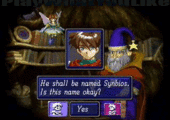
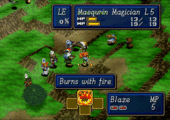
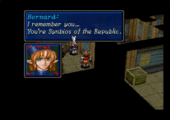
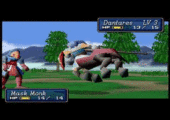
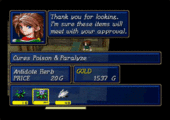
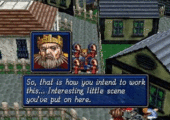
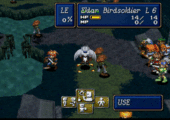
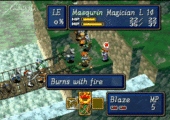
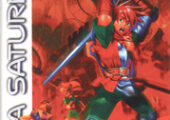
Shining Force was my favourite series on the Genesis. Played the two games so many times with so many different army compositions. Even played through Shining in the Darkness. Never did, though, play the games on the Game Gear, Sega CD or the Saturn, but it’s still goal to one day beat them all!